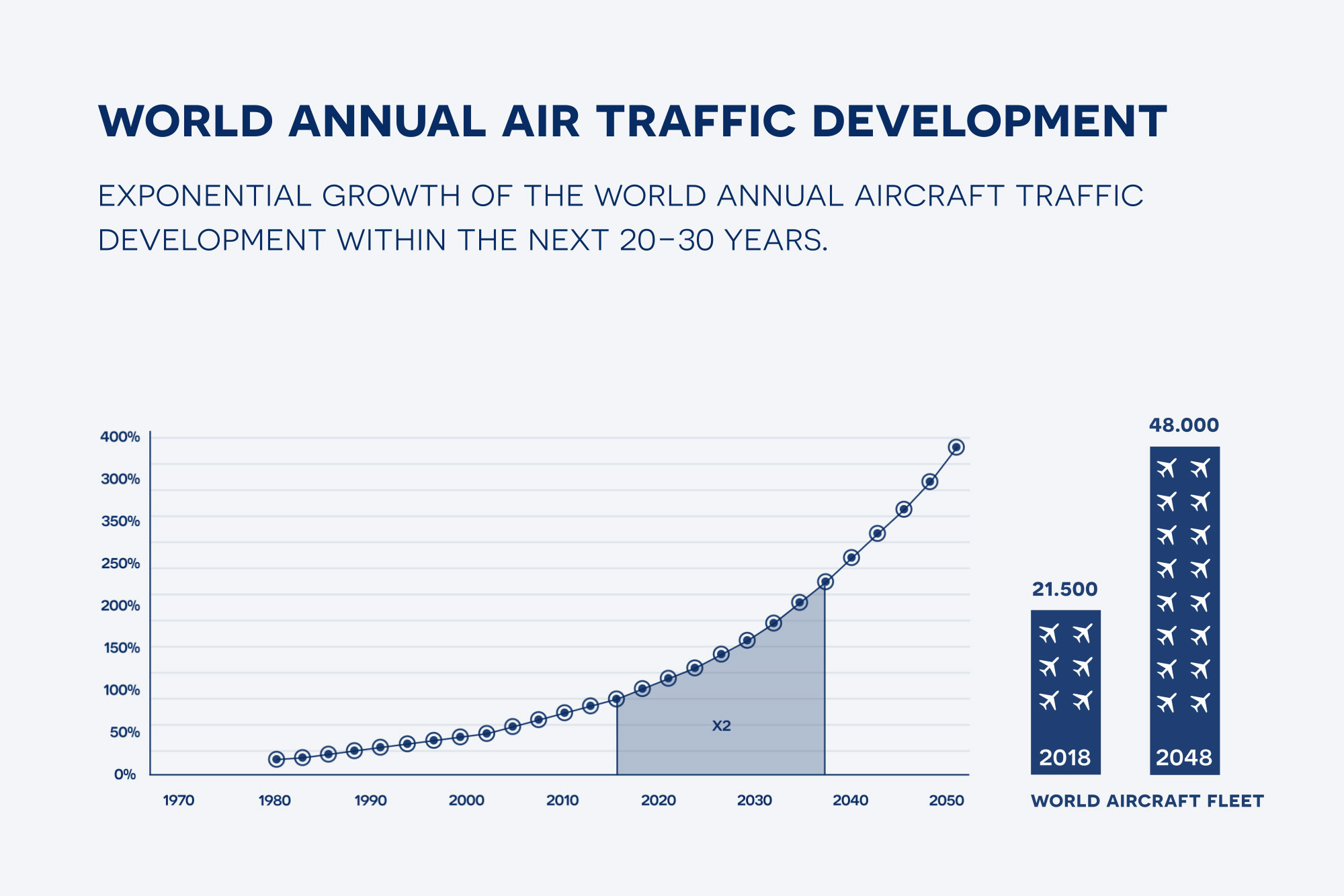
Beyond the current state of the art.
Get more impression about HLFC-WIN through this video with the valuable explanations of the HLFC-WIN partners.
Improvement leads to success.
Cleaner air is our aim.
Since the beginning of commercial air travel, airplanes have brought the world closer together. According to latest forecasts by industry experts the total number of passengers will double over the next 20 years, leading to an enormous demand on additional aircraft. The European aeronautical community is aware of the challenges accompanied by this trend and is developing innovative technologies and systems to reduce the environmental footprint of aviation.
Dedicated to change
By increasing the aerodynamic efficiency of future aircraft, the environmental footprint can be significantly reduced. With the multi-disciplinary approach of HLFC-Win, the maturity of laminar flow control integrated on transport aircraft will be increased significantly. Besides lower fuel consumption, savings in CO2 and NOx emissions are the main focus. Therefore, this project directly addresses Clean Sky 2 and Flightpath 2050 high level objectives.
Clear goal in sight
HLFC-WIN as part of the Clean Sky 2 intends to use the expertise of academia, research and industrial development to reach its ambitious goals. The consortium aims to develop a design of an HLFC-wing towards a large scale HLFC demonstrator as requested in Clean Sky 2 call JTI-CS2-2016-CPW04-LPA-01-11 ‘Design and construction of a wing with HLFC (Hybrid Laminar Flow Control) technology and corresponding manufacturing process, proven by means of a large-scale ground-based demonstrator and is targeting to prove TRL4 on integrated level’.
Perfect the ideas
In HLFC-WIN, the consortium will develop an integrated HLFC wing by maturing and combining innovative sub-technologies in all disciplines, especially materials and structures. For example, hybridizing metallic and CFRP parts will allow a more efficient integration of systems into the wing leading edge. High production rates, light-weight, easy interchangeability and maintainability will be crucial. A selection of innovative materials and processes will lead to a new structural approach where the related opportunities of recent developments can fully be exploited.
Progress is the way to success.
The extremely demanding environmental targets for the aircraft industry set by the European aeronautical vision 2050, supports the actors’ vision of new aircraft configurations. Besides the responsibility towards the environment, the foresight of the actors to explore new technologies also plays an important role.














